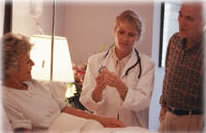 Leg Stress Fracture, Tibia Leg Stress Fracture, Tibia |
 Liver Injury Liver Injury |
 Neck Dislocation Neck Dislocation |
 Neck Fracture Neck Fracture |
 Neck Sprain Neck Sprain |
 Neck Strain Neck Strain |
 Nose Injury Nose Injury |
 Pelvis Strain, Hip-Trunk Pelvis Strain, Hip-Trunk |
 Pelvis Strain, Ischium Pelvis Strain, Ischium |
 Perineum Contusion Perineum Contusion |
 Rib Dislocation Rib Dislocation |
 Rib Fracture Rib Fracture |
 Rib Sprain Rib Sprain |
 Rib Strain Rib Strain |
 Shoulder-Blade (Scapula) Bursitis Shoulder-Blade (Scapula) Bursitis |
 Shoulder-Blade (Scapula) Contusion Shoulder-Blade (Scapula) Contusion |
 Shoulder-Blade Fracture, Acromion Shoulder-Blade Fracture, Acromion |
 Shoulder-Blade (Scapula) Fracture, Coracoid Process Shoulder-Blade (Scapula) Fracture, Coracoid Process |
 Shoulder-Blade (Scapula) Fracture, Glenoid Fossa Shoulder-Blade (Scapula) Fracture, Glenoid Fossa |
 Shoulder-Blade (Scapula) Fracture, Neck Shoulder-Blade (Scapula) Fracture, Neck |
 Shoulder-Blade (Scapula) Strain Shoulder-Blade (Scapula) Strain |
 Shoulder Bursitis, Gleno-Humeral Shoulder Bursitis, Gleno-Humeral |
 Shoulder Bursitis, Subacromial Shoulder Bursitis, Subacromial |
 Shoulder Contusion Shoulder Contusion |
 Shoulder Dislocation Shoulder Dislocation |
 Shoulder Sprain, Acromio-Clavicular Shoulder Sprain, Acromio-Clavicular |
 Shoulder Sprain, Gleno-Humeral Shoulder Sprain, Gleno-Humeral |
 Shoulder Strain Shoulder Strain |
 Shoulder Tendinitis & Tenosynovitis Shoulder Tendinitis & Tenosynovitis |
 Skin Abrasion Skin Abrasion |
 Skin Laceration Skin Laceration |
 Skin Puncture Wound Skin Puncture Wound |
 Spine Fracture, Lower Thoracic & Lumber Region Spine Fracture, Lower Thoracic & Lumber Region |
 Spine Fracture, Sacrum Spine Fracture, Sacrum |
 Spine Fracture, Tailbone Spine Fracture, Tailbone |
 Spine Stress-Fracture, Neck or Back Spine Stress-Fracture, Neck or Back |
 Spleen Rupture Spleen Rupture |
 Thigh-Bone Fracture Thigh-Bone Fracture |
 Thigh Contusion Thigh Contusion |
 Thigh Hematoma Thigh Hematoma |
 Thigh Injury, Hamstring Thigh Injury, Hamstring |
 Thigh Strain, Quadriceps Thigh Strain, Quadriceps |
 Thigh Strain Thigh Strain |
 Thumb Fracture Thumb Fracture |
 Thumb Sprain Thumb Sprain |
 Toe Dislocation Toe Dislocation |
 Toe Exostosis Toe Exostosis |
 Toe Fracture Toe Fracture |
 Tooth Injury & loss Tooth Injury & loss |
 Wrist Contusion Wrist Contusion |
 Wrist Dislocation, Lunate Wrist Dislocation, Lunate |
 Wrist Dislocation, Radius or Ulna Wrist Dislocation, Radius or Ulna |
 Wrist Ganglion Wrist Ganglion |
 Wrist Sprain Wrist Sprain |
 Wrist Strain Wrist Strain |
 Wrist Tenosynovitis Wrist Tenosynovitis |
|
|
Rib Dislocation
Injury and displacement of a rib
where it joins the sternum (breastbone) or
spinal column. Dislocation means the rib and
adjoining bones no longer touch each other.
Subluxation is a minor dislocation in which the
joint surfaces still touch, but not in normal
relation to each other.
Body Parts Involved
-
Rib and sternum or spinal column.
- Ligaments attaching ribs to the sternum or
spinal column.
- Soft tissue surrounding the dislocation or
subluxation site, including periosteum (covering to bone), nerves, tendons, blood vessels and
connective tissue.
Causes
-
Direct blow to the ribs.
- End result of a severe rib sprain.
Signs & Symptoms
-
Excruciating pain at the time of injury.
- Loss of function of the injured rib, causing
breathing difficulty.
- Severe pain when moving.
- Visible deformity (lump) if the dislocated
bones have locked in the dislocated position.
Bones may spontaneously reposition themselves and leave no deformity, but damage
is the same.
- Tenderness over the dislocation.
- Swelling and bruising over the rib.
- Pain when taking a deep breath, coughing or laughing.
- Numbness or paralysis of other ribs below the
dislocation or subluxation from pressure, pinching or cutting of blood vessels or nerves.
Treatment
Note:- Follow your doctor's instructions. These instructions are supplemental.
First Aid
- Use instructions for R.I.C.E., the first letters of rest, ice, compression and elevation(If possible).
- The doctor may manipulate the dislocated rib to return it to its normal position. Manipulation should be done within 6 hours, if possible. After
that time, internal bleeding and displacement of body fluids may lead to shock. Also, many tissues lose their elasticity and become difficult
to return to a normal position.
Continuing Care
-
At home:
- Use an ice pack 3 or 4 times a day. Wrap ice chips or cubes in a plastic bag, and wrap the bag in a moist towel. Place it over the injured
area for 20 minutes at a time.
- After 48 hours, apply heat instead of ice if it feels better. Use heat lamps, hot soaks, hot showers, heating pads, or heat liniments and
ointments.
- Take whirlpool treatments, if available.
- Wrap the injured chest with an elasticized bandage between treatments.
- Massage gently and often to provide comfort and decrease swelling.
Medication
-
Your doctor may prescribe:
- General anesthesia or muscle relaxants to make joint manipulation possible.
- Acetaminophen to relieve moderate pain.
- Narcotic pain relievers for severe pain.
- Stool softeners alter manipulation to prevent constipation due to decreased activity.
- Antibiotics to fight infection if surgery is necessary.
Home Diet
- Drink only water before manipulation or surgery to correct the dislocation. Solid food in your stomach makes vomiting while under general anesthesia more hazardous.
- During recovery, eat a well-balanced diet that includes extra protein, such as meat, fish, poultry, cheese, milk and eggs. Increase fiber and fluid intake to prevent constipation that may result from decreased activity.
- Your doctor may suggest vitamin and mineral supplements to promote healing.
Diagnostic Measures
-
Your own observation of symptoms.
- Medical history and exam by a doctor.
- X-rays of the chest and spine.
Prevention Tips
- Build your overall strength and muscle tone
with a long-term conditioning program
appropriate for your sport.
- Warm up adequately before physical activity.
- After healing, wear protective devices, such
as wrapped elastic bandages or a special rib vest, to prevent reinjury during participation in
contact sports.
- Consider avoiding contact sports if treatment
is unsuccessful in restoring strong, normal rib connections.
|
|





